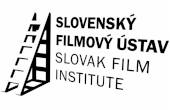Central and Eastern Europe is one of the most important locations for global games developers and studios, and artists in the region are increasingly working for both film and games. FNE looks at how these two sectors of the entertainment industry are converging and why this trend is important for the future development of both.
FNE: When was the Slovak Game Developers Association founded and what have been your main missions and strategic projects so far?
Maroš Brojo: The Slovak Game Developers Association (SGDA) is a civic association established in 2015 and aimed at cultivating the conditions for digital game development in Slovakia as well as supporting game developers and start-ups. It also helps new talents and promotes the education of professionals and the general public in the field of digital games.
To achieve these goals, the association organises diverse activities for the game development community, such as meetups and lectures (in Bratislava and Košice), and it co-organises the conferences Art & Tech Days in Košice and Game Days in Trnava. SGDA cooperates with public institutions, namely the Slovak Arts Council, the Slovak Museum of Design, the National Cultural Centre, and the Ministry of Culture. To support digital game development as a branch of the creative industry, the association helps Slovak game developers to improve their artistic, technological and business skills.
FNE: Which Slovak games would you single out that have had international success?
Maroš Brojo: Bigger companies like Pixel Federation, Inlogic and PowerPlay Studio, mostly focused on free-to-play games, have continuous success with several of their IPs. In the last years, we also had several successful indie titles like Workers and Resources: Soviet Republic by 3DIVISION, Loot River by Straka Studio and Feed and Grow: Fish by Old B1ood. These are created by small teams of up to five people and managed to catch attention of international audiences.
FNE: What is the current situation in the Slovaki gaming industry and what distinguishes it from the industry of other countries?
Maroš Brojo: The Slovak game development scene has been growing continually for more than a decade now. We have several big established gamedev companies focused on free-to-play and premium games, several service providers and outsourcing companies with renowned international clients, and thanks to the Slovak Arts Council's support (since 2017) a flourishing indie scene with many promising titles on their way.
The only thing we are still missing is a big international success with at least one game that would bring us a bit more pride and recognition also among non-gamers and state institutions, and maybe attract some of the local talent that has been escaping abroad while searching for more challenging and prestigious projects in better living conditions.
FNE: Film and games convergence is a hot topic now. Are there any companies in your association working across both and what are they working on?
Maroš Brojo: There are several companies in Slovakia that were originally established as film postproduction service providers that have been working mainly in the field of digital asset creation in recent years. Many of them provide services like animation, postproduction, and VFX for films while providing 3D modeling, rigging, animation, photogrammetry, and motion capture services for game development companies. The most established ones are probably Studio 727, Blue Faces and Noise Artillery.
FNE: Are there any Slovak films that are being turned into games or Slovak games that are being turned into films or TV series?
Maroš Brojo: Animators started partnering with game developers in recent years and thanks to this we have an accompanying mobile game release in recent weeks called Yourland: Bowlers Run (Studio Nohavmede) that is based on the long animated film Yourland by Peter Budinsky, produced by BFILM (Slovakia) in coproduction with Plutoon (Slovakia), THE PACK (Belgium), BFILM.cz (Czech Republic) and Radio and Television Slovakia.
Katarina Kerekesova, the author of the TV series Mimi & Lisa and Websters, is cooperating with Darkvision Games Studio, which is currently developing a point-and-click adventure game for children based on the Mimi & Lisa IP. When it comes to the opposite, there are currently no filmmakers adapting existing Slovak games since that would require more international success with domestic game IPs that we currently don't have.
FNE: Are games going to IPO on Slovak stock market and do the companies going to IPO include a film person or film projects?
Maroš Brojo: Currently, there are no publicly-traded gaming companies in Slovakia and none are planning to IPO in the future, based on my knowledge. They mostly raise funds via publishers, investors or fund development via their own resources. Bigger ones have established cash flows thanks to their previous successes and currently active games.
FNE: What can you tell us about Slovak Game Development Industry's Record Growth in 2021?
Maroš Brojo: In Slovakia, the growth of the game development industry has been continuous for several years now, but in 2021 it was record-breaking, also thanks to the pandemic. The turnover growth averages around 10-15% per year with similar numbers concerning rising numbers of people working in the industry.
During the economical crisis or pandemic years, there is a tendency for people to stay at home more, which leads to more games being played. It might seem a bit paradoxical, but we have several years of data that confirm this. A positive side of this is that the game development industry is much more resilient to these forms of economic downturns and it is able to not only generate more income, but also to more easily maintain its workforce and support its employees and their families.
FNE: How do you see the development of the relationship between the film and gaming industries?
Maroš Brojo: Both are integral parts of the creative industries and should be cooperating more in order to strengthen their positions. Building cross-media IPs is key not only to international success, but it could also be very interesting in the field of independent and artistic production that enables more freedom and experimentation.
While they don't necessarily need each other to exist and succeed, there is a wide variety of options when it comes to means of cooperation. Even smaller productions are able to produce one IP in parallel now since in many EU countries there are funds specifically dedicated to film production while having art councils that support multimedia and game creation. The funding is there but the creators need to be a bit more open and willing to try new things in tandem.
FNE: What is the annual turnover of game developers in Slovakia?
Maroš Brojo: 80 m EUR in 2021 with a growth rate of between 5 m to 10 m EUR per year since 2016 when we first started to track the game development industry in Slovakia.





















